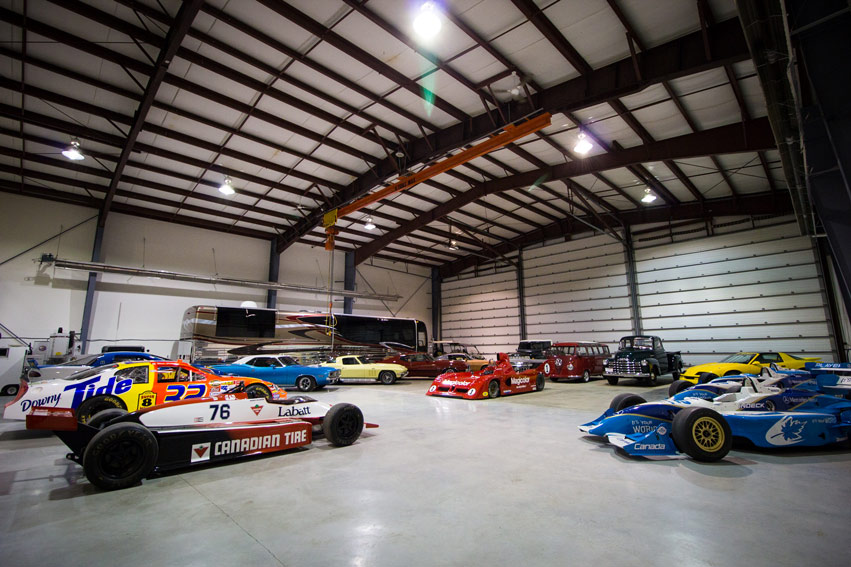A man and his cars
“As much as we’d all like to believe that we’re geniuses at this stuff, sometimes you just get a little lucky.” Pieter Baljet clearly understands the use of self-deprecation in conversation. Having enjoyed success in both his business life, and through his passion for motor racing, Baljet is an interesting and engaging individual, who is happy to share his experiences. Baljet’s childhood was spent in West Vancouver, the son of a Dutch immigrant father, who ran a small janitorial company, and his stay-at-home mom, a native Vancouverite. Growing up in the 1970s Baljet was, like many, influenced by car culture. “Cars were every kid’s thing!” One of the most exciting times in American motoring, this was the era of the Muscle Car. General Motors, Ford, Chrysler and, to a lesser extent, American Motors Corporation, created cars that were powerful, stylish, and exceptionally fast. Many of these cars are now highly coveted by collectors. A fascination for all things automotive was bolstered for Baljet by trips to the local track. “My neighbour, Jim Madden, raced cars, and he took me to Westwood. I was 13 years old the first time.” Thereafter, he had little doubt as to what he wanted to do with his life. “I had my first race at Westwood at age 21.” With the dream firmly in place, Baljet set about purchasing his own car, “I had to save the money to buy the car, a 1970 Camaro, that was an ex-Trans Am car.” Success quickly followed, as he won the British Columbia Championship in his first year, 1982, over a series of seven or eight races. Racing has always been an expensive pursuit. In order to support his enthusiasm for the sport, Baljet formed his own automotive wholesale company, North Shore Auto Exchange, with Edgar Uhlmann. This was a decision that marked the beginning of his career in the automotive trade. When not actively engaged at the Auto Exchange, time was spent in a race car.
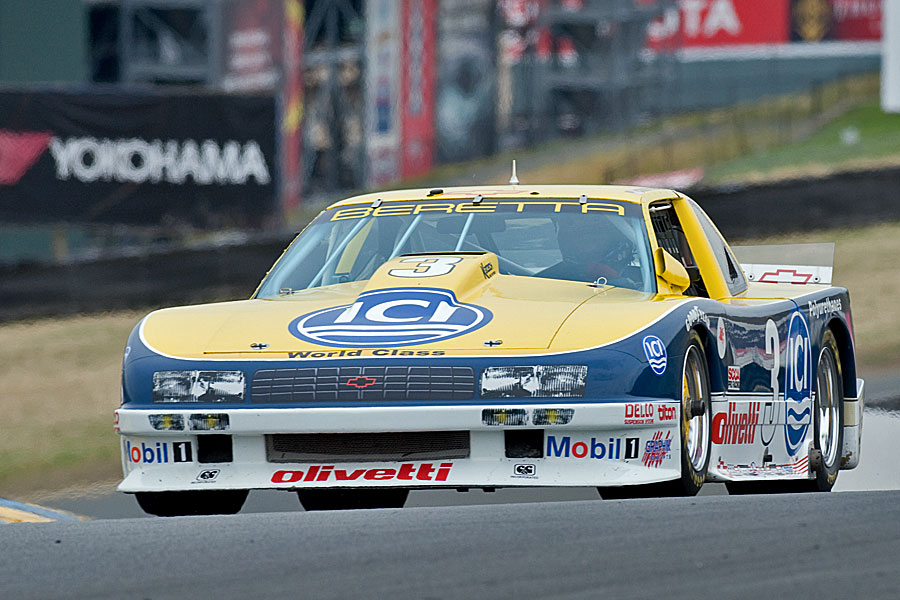
“I started racing more and more—it’s a bit convoluted. I wanted to go professional as I thought that there was perhaps a career in this for me.” Taking a chance on his future, Baljet purchased a ride with one of the factory Pontiac teams. With teammate Gordy Oftedahl, he impressed in the Seattle Trans Am race. Remarkably, he qualified behind his teammate and, despite being hampered by a first lap accident, he drove to a top 15 finish. A fortunate introduction to Rick Moore was to have a profound influence on Baljet. The owner of Maple Ridge Chrysler, Moore was also a racing enthusiast, and offered Baljet a partnership that combined co-driving duties on longer events and sponsorship support. Significantly, Moore was also to mentor Baljet in the retail side of the car business, which eventually led to his receiving a dealership opportunity, “He helped me get into General Motors, and they offered me the opportunity to get into Duncan, basically saying that if I did a good job in the next couple of years, at a dealership that was losing money, and were to make it profitable and get the numbers where they wanted them, they would then consider other opportunities, maybe Toronto or Vancouver. That’s how I ended up on the Island in May of 1987.” Baljet clearly enjoys his professional life. He sold his General Motors dealership two and half years ago to a public company, and now devotes himself to the Honda store he purchased about a decade ago. “I love the car business. If I hadn’t owned Honda I wouldn’t have sold the GM store. I think anyone who has been successful will tell you it’s hard to get out. It’s such a fun business, with interesting characters and people, and new things happen every day.”
Greg Moore and Indy Car Racing
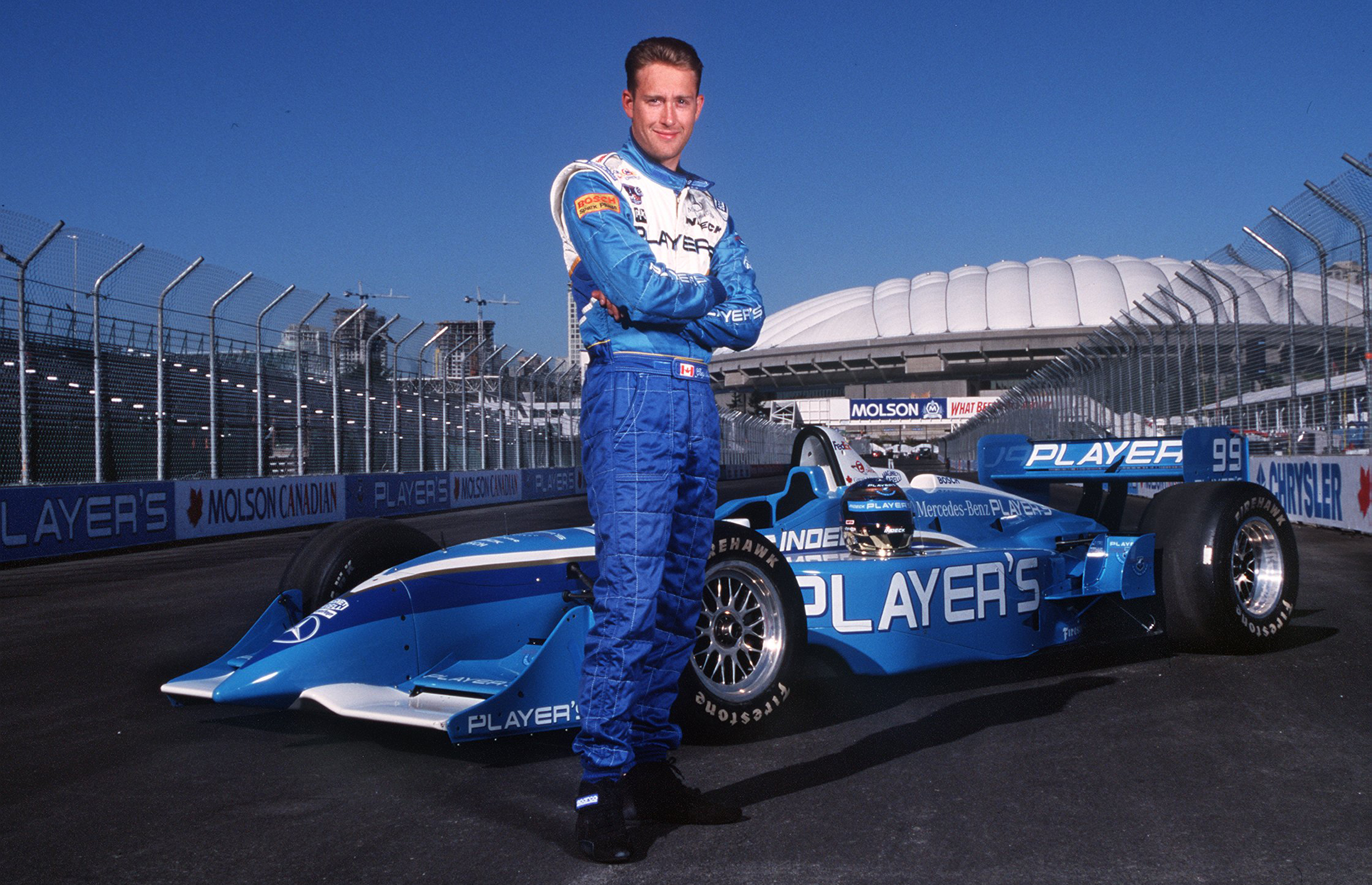
Baljet’s best friend, mentor, and racing teammate Rick Moore is the father of Greg Moore, one of Canada’s most successful racing drivers. As Greg Moore’s career began to develop, Baljet and Rick Moore curtailed their own racing to provide Greg the support needed to excel. Away for as many as 20 weekends per year, Baljet enjoyed his role with the racing team. “When Greg got into Indy Light I spent a lot of time going to every race, and when he got into Indy Car I went to just about every race; I was a spotter for him.” On October 31, 1999, while competing in the season finale Marlboro 500 at the California Speedway in Fontana, California, Greg Moore was involved in a catastrophic accident. The injuries he sustained proved fatal. “Unfortunately, after Greg died…I wouldn’t say I soured on it, I just backed away from the sport.” A number of years were to pass before Baljet once again found himself in a racing car. Tim Brown, owner of Brown Bros. Ford, offered him the opportunity to join him as a co-driver in an endurance race. ”I hadn’t raced since 2006 or 2007. I hadn’t done any real driving since ’93 or ’94. Fortunately I took him up on it and have been doing it ever since.” Not surprisingly, as a result of his time spent at North America’s top circuits, Baljet has formed enduring friendships with many of the sport’s top drivers. “Being involved with Indy Car culture through the ‘90s with Greg, Mario Andretti, Dario Franchitti, Max Papis—Max and Dario are still good friends today—I talk with them frequently. Dario comes to Monterey every year; I see him there.”
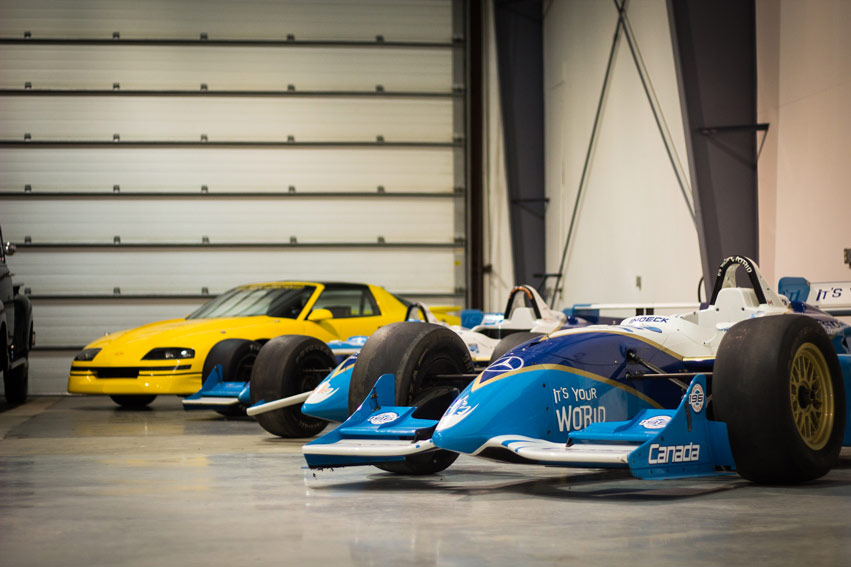
Vancouver Island Motorsport Circuit
With his love of motorsport, Baljet is looking forward to the opening of the Vancouver Island Motorsport Circuit.“It’s a great concept. It takes great vision to do something like this.” A project of the GAIN Dealer Group, the Vancouver Island Motorsport Circuit is being developed in the stunning Cowichan Valley. “They went and got Tilke engineering to design the track, which is probably the first private track in North America they’ve designed.”
 Contained within the dimensions of the 2 ½ km circuit are 19 corners, elevation changes of 26 metres, high speed sections, and some hard breaking areas. The Vancouver Island Motorsport Circuit will quickly become a destination for sports cars enthusiasts. The facility features a 15,000 sq.ft. Clubhouse for the use of members and guests between driving stints. Familiar with the demands of performance driving, Baljet immediately saw the advantage of a quiet place to relax, “Driving a race car isn’t like going to play golf. You don’t do five hours of it. I’ve been around this game long enough to know that Ron Fellows can go out and probably drive 20 hours at 7/10ths, at 10/10thsmaybe 2 hours. As people start out it will be very difficult to do more than 5 laps without taking a 15 – 20 minute break to think about it.” “The concentration required to go fast, and be safe, is overwhelming when you first do it.”
Contained within the dimensions of the 2 ½ km circuit are 19 corners, elevation changes of 26 metres, high speed sections, and some hard breaking areas. The Vancouver Island Motorsport Circuit will quickly become a destination for sports cars enthusiasts. The facility features a 15,000 sq.ft. Clubhouse for the use of members and guests between driving stints. Familiar with the demands of performance driving, Baljet immediately saw the advantage of a quiet place to relax, “Driving a race car isn’t like going to play golf. You don’t do five hours of it. I’ve been around this game long enough to know that Ron Fellows can go out and probably drive 20 hours at 7/10ths, at 10/10thsmaybe 2 hours. As people start out it will be very difficult to do more than 5 laps without taking a 15 – 20 minute break to think about it.” “The concentration required to go fast, and be safe, is overwhelming when you first do it.”
The driving techniques required to drive quickly won’t necessarily be intuitive to the inexperienced. Members of the Circuit will have the opportunity to learn from the professionals on staff. Like any skill, time invested in learning the basics will create a knowledge base upon which to build. Reinforcing this point, Baljet added, “Your experience street driving has nothing to do with driving on the track, except you use a car. Lots of people like to drive fast; this will give them the opportunity to do so safely in a controlled environment where they can learn.” The Tilke designed track has been designed to provide novice drivers a safe learning environment, and will provide the experienced with challenges enough to keep them engaged. Having toured the circuit, Baljet believes it will be entertaining. “My impression is that it’s going to be fun because there are definite blind spots. We didn’t drive it fast, but it’s very intuitive. If you enter a corner in the right place, it spits you out in the right place and sets you up for the next corner.” With the circuit opening in May of 2016, the question as to what car he would choose to drive on the track seemed obvious. “The car that’s going to be probably the most fun is going to be a fairly light car and nimble. We have a Porsche GT3 Cup car that would be a lot of fun. A big and heavy car won’t be a lot of fun on the track… If you drive a Porsche or a Camaro it will be a lot of fun.” “I’m still currently racing and loving the game, and for someone to build a race track five miles from my race team shop in Duncan is a dream come true. For people who live in Vancouver, access to the Island isn’t that difficult, especially if you are going to leave a car over here.” Pieter Baljet’s success in business and racing combine to prove the old adage true—nice guys finish first. You may also be interested in part one: A life with Passion:
Rudi Koniczek of Rudi and Company.